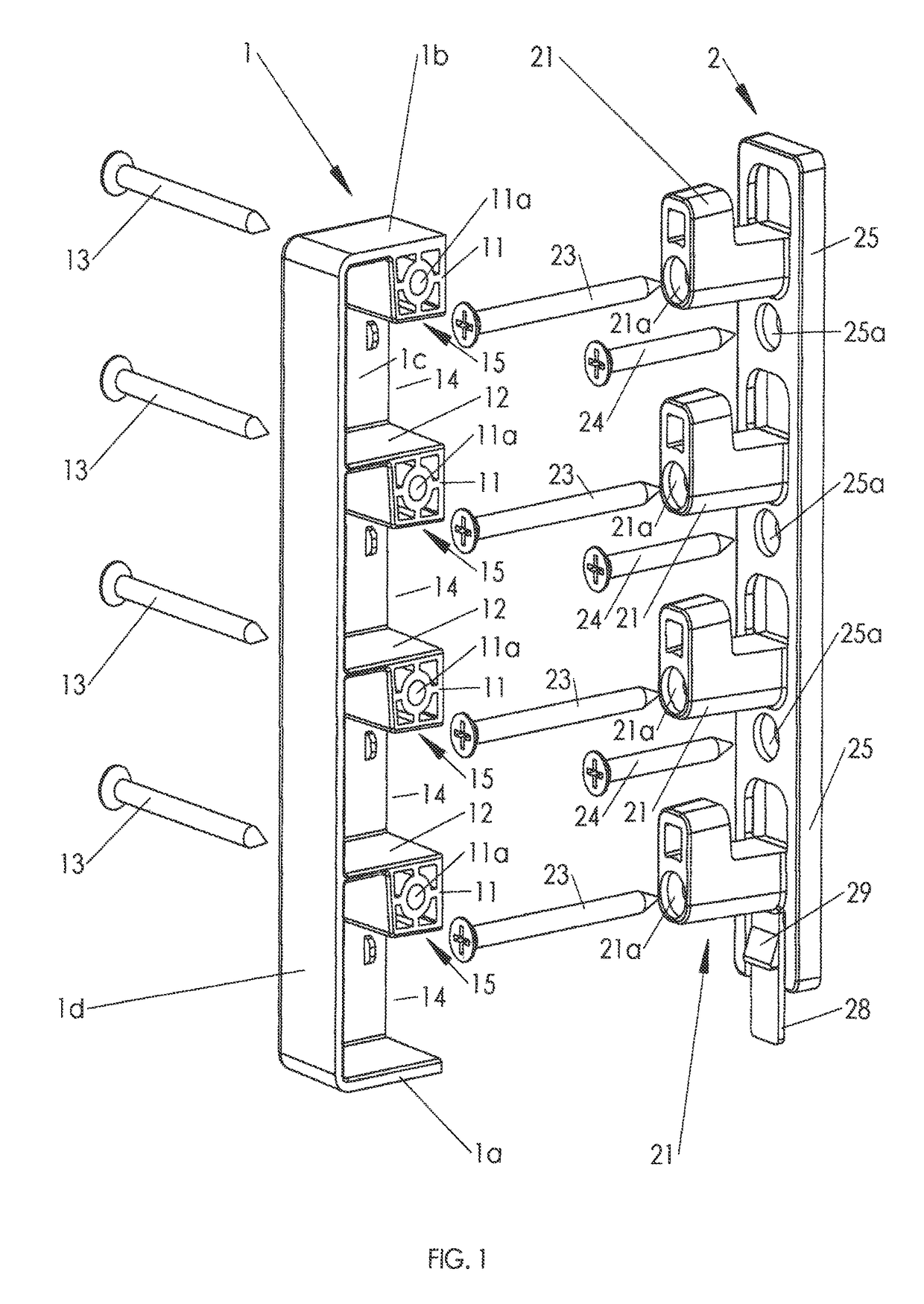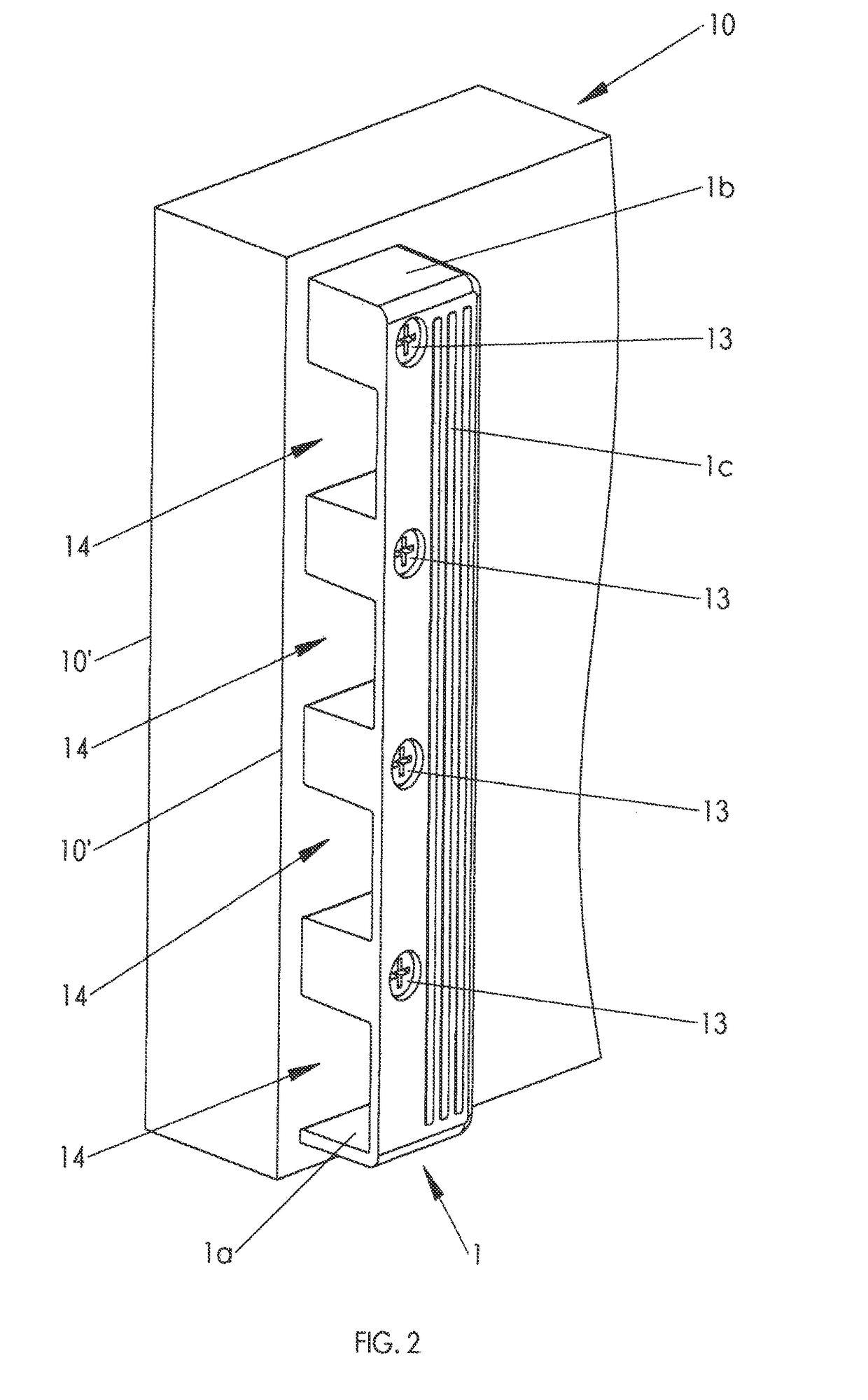Bedstead fastening device
a technology of bedstead and fastening rod, which is applied in the direction of fastening means, furniture joining, sheet joining, etc., can solve the problems of not even certain, excessive force being applied, and noisy bed support function
- Summary
- Abstract
- Description
- Claims
- Application Information
AI Technical Summary
Benefits of technology
Problems solved by technology
Method used
Image
Examples
Embodiment Construction
[0020]The invention relates to a bed fastening device used in connecting together the components of a bed structure, such components comprising a pair of side rails extending in the longitudinal direction of the bed structure and a pair of side rails extending in the transverse direction thereof. The four side rails are connected at the four corner posts of the bed structure with an equivalent number of bed fastening devices. In a common bed structure all such side rails have the same configuration and they only differ in their length dimension with the transversal side rails having a length smaller than the longitudinal ones. Often one of the side rails extending in the transverse direction is being configured as a headboard being located at the top of the bed and extending above the level of the mattress. The drawings show the bed fastening device of the invention that comprises a first mating part 1 and a second mating part 2 with the first mating part 1 being mounted proximally ...
PUM
 Login to View More
Login to View More Abstract
Description
Claims
Application Information
 Login to View More
Login to View More - R&D
- Intellectual Property
- Life Sciences
- Materials
- Tech Scout
- Unparalleled Data Quality
- Higher Quality Content
- 60% Fewer Hallucinations
Browse by: Latest US Patents, China's latest patents, Technical Efficacy Thesaurus, Application Domain, Technology Topic, Popular Technical Reports.
© 2025 PatSnap. All rights reserved.Legal|Privacy policy|Modern Slavery Act Transparency Statement|Sitemap|About US| Contact US: help@patsnap.com



